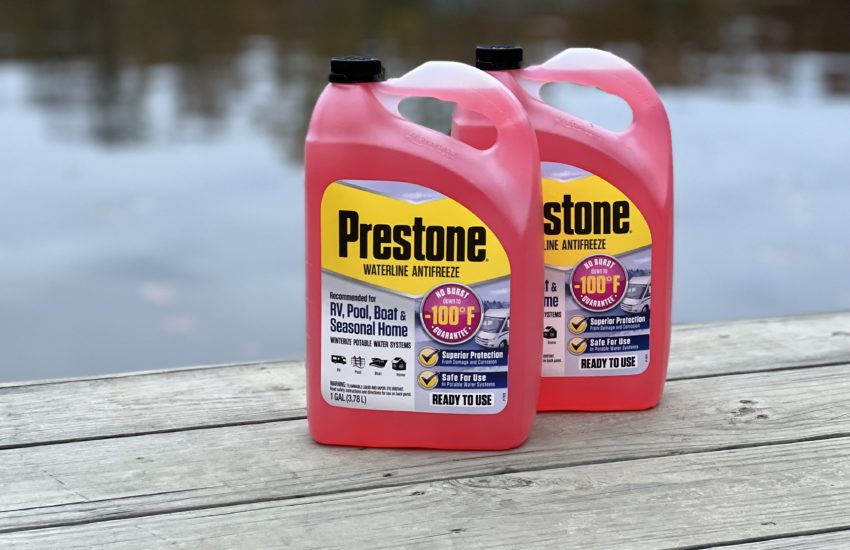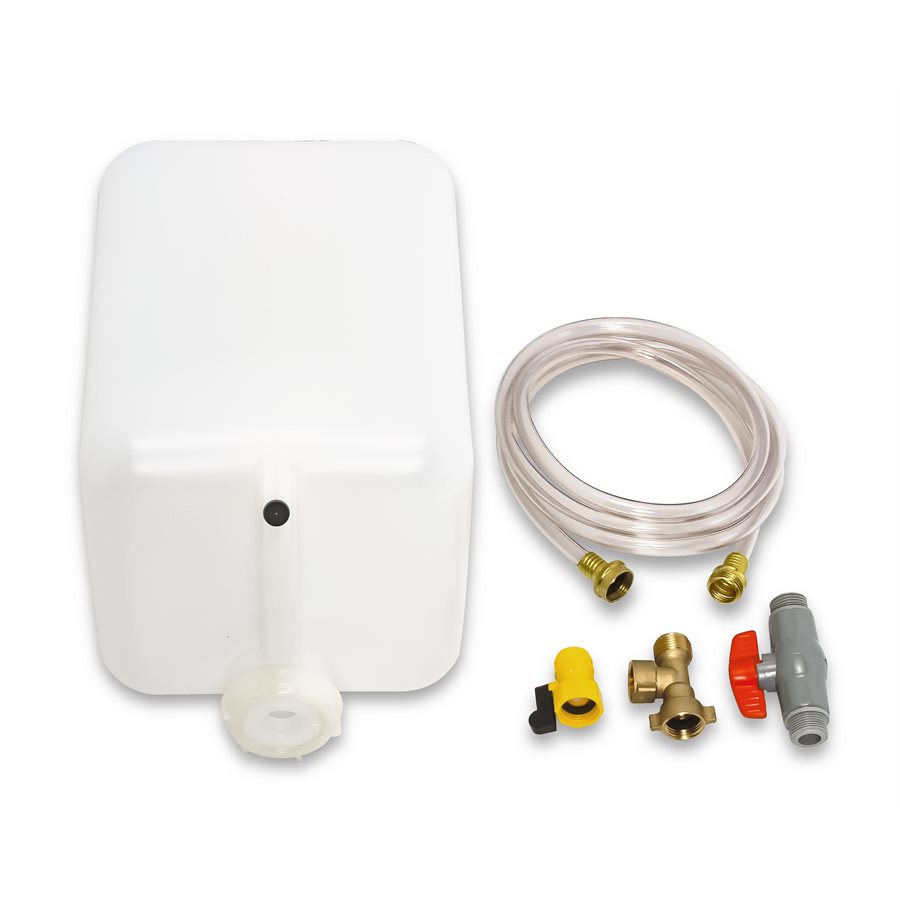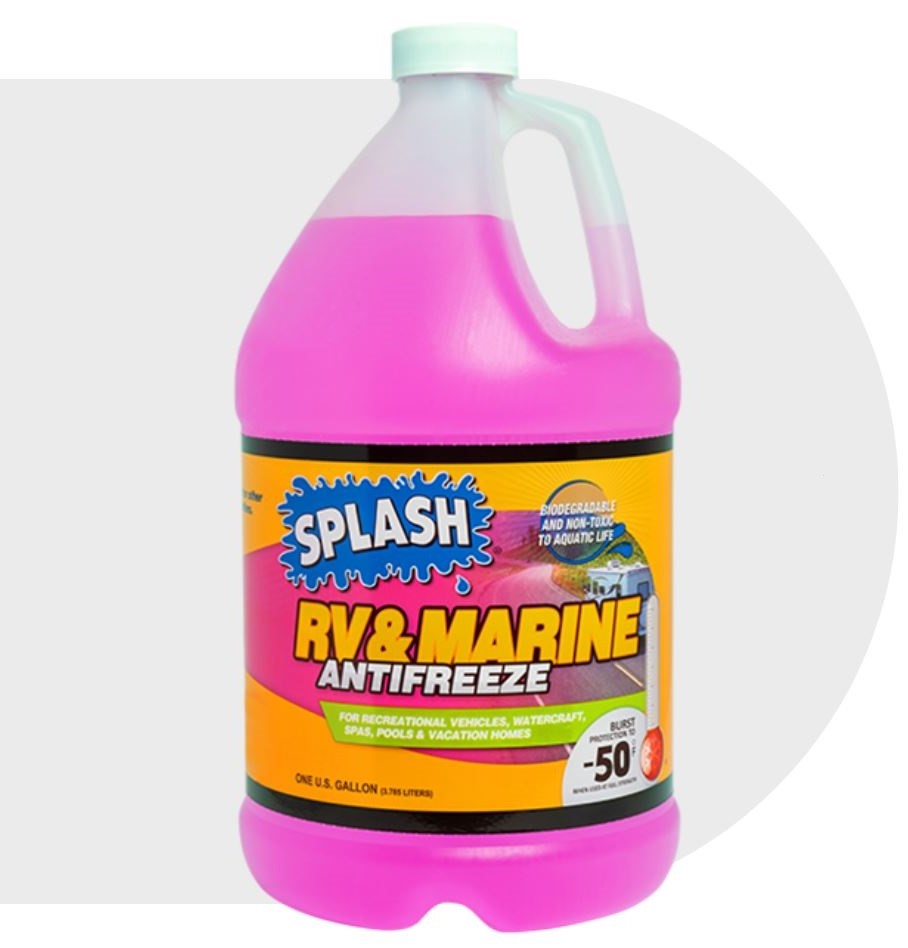If you’re not in an area that stays above freezing all year, then you’ll need to know how to winterize a boat. This is extremely important as your boat engine as well as other components can be damaged internally if not winterized, or winterized properly. When the boating season arrives, your happy moments and thoughts of being out on the water could be plagued with broken parts and expensive bills. We’re here to offer some suggestions to winterize your inboard vessel to help it stay safe over the winter so you can pick up right where you left off without any major setbacks.
Facts About Boat Winterization
Why do you Need to Winterize a Boat?
Depending on the type of boat you own and the features that are on it, there could be many reasons your boat may need to be winterized. Along with these different reasons come different steps to take, and different components that need treated. We’ve listed out a few of the steps that need taken to properly winterize your boat with an inboard engine.
Regardless of the style boat or what features it may have, the reason it needs winterized is due to the fact that it may contain water in these components. If temperatures reach below freezing, this water will eventually freeze which will cause it to expand. As you may or may not know, expanding frozen water can wreak havoc on anything it is trapped inside. Components such as engine blocks and fresh water systems aren’t built to flex and handle expansion of fluids inside. If there is enough force, these components may crack in the process. Once the water thaws and it’s times to use them again, the result will be some kind of leak.
What Needs to be Done to Winterize a Boat?
Depending on the type of boat you may have, there are a few components that should be winterized. The larger the boat with more features, the more complex and time consuming the process will be. For example, a boat with two engines will need to have both engines winterized. A boat with a head and fresh water system will need those systems winterized, etc.
We’ve put together a guide below that shows some suggestions of common items that should be winterized. Each boat is different, so be sure to consult your boats manual or have someone check your specific setup out if you are unsure on what exactly needs winterized. Click on the items to skip to a more detailed section with tips and additional information.
Engine and Outdrive
- Stabilize the Fuel
- Change the Engine Oil
- Change the Outdrive Oil
- Run Antifreeze Through the Engine
- Fog the Engine
- Drain the Engine Block and Manifolds
Interior Systems
- Run Antifreeze Through the Fresh Water System
- Drain the Hot Water Heater
- Run Antifreeze Through the Head (Toilet)
- Run Antifreeze Through the Shower
Basic Steps to Winterize a Boat Engine
Below is a set of basic steps and recommendations when winterizing your boat’s engine. We’ve called this a “recommendation”, because each boat is different and may have a slightly different procedure.
Stabilize the Fuel
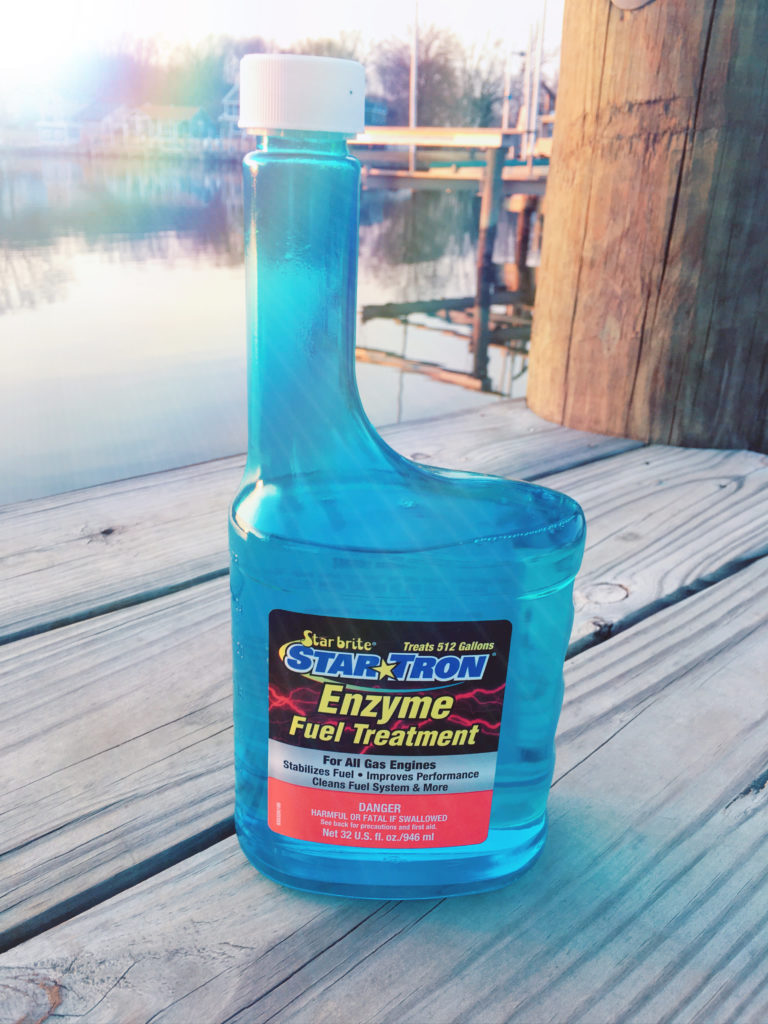
Typically it is best practice to fill the fuel tank up on a boat before letting it sit for an extended period of time. This will help keep condensation from forming inside which will keep the fuel free of water. On top of filling the tank, adding a fuel additive to help protect the fuel is a must. This will ensure the fuel stays free of water, does not break down, and keeps from gumming up while sitting. This is especially important in carburetors that have small passages that may become clogged.
Tip: A fuel additive will only protect the fuel inside the tank unless the engine is run long enough to move treated fuel into the lines and fuel delivery system. Make sure to either run the engine long enough to move treated fuel into the entire system, or drain the rest of the system if possible.
Change the Engine Oil
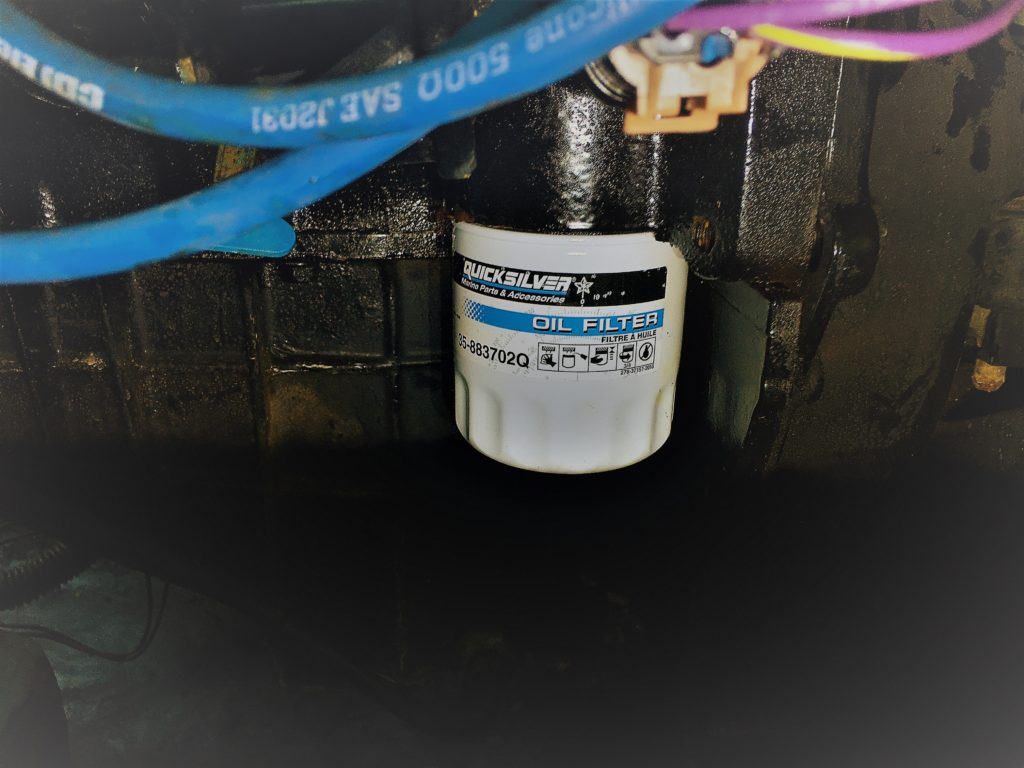
Changing the oil in your boats engine is recommended at the end of the season before putting it away for the winter. In time, the oil in an engine collects foreign materials that can be harmful to your engine. Moisture can also be collected in the oil. If left in the engine for an extended period of time, this moisture could rust or corrode metal surfaces inside of the engine. On top of this, moisture within could also freeze and cause damage to internals.
Tip: Check out our guide on how to change the oil in an inboard engine if you are looking for some guidance with this procedure.
Change the Outdrive Oil
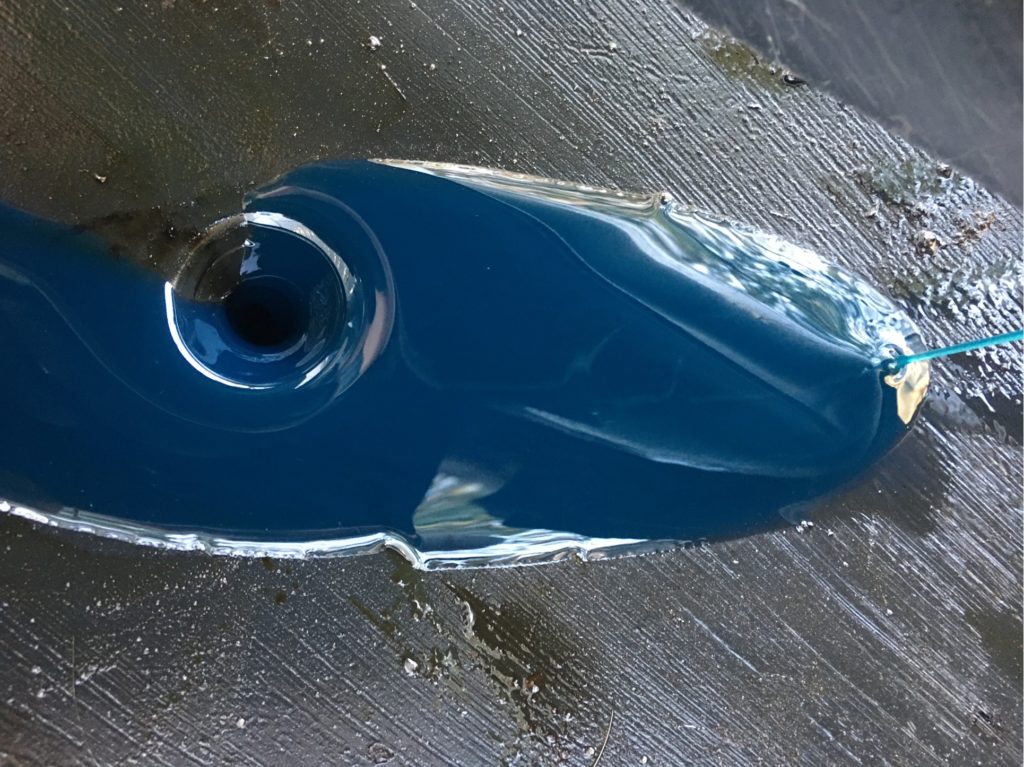
Changing the outdrive oil in your boat is recommended at the end of the season before putting it away for the winter. Similar to engine oil, in time, the oil in the outdrive collects foreign materials that can be harmful to the gearbox. Moisture can also be collected in the oil. If left in the gearbox for an extended period of time, this moisture could rust or corrode metal surfaces inside. On top of this, moisture within could also freeze and cause damage to internals.
Tip: Check out our guide on how to change the oil in an outboard lower unit if you are looking for some guidance with this procedure.
Run Antifreeze Through the Engine
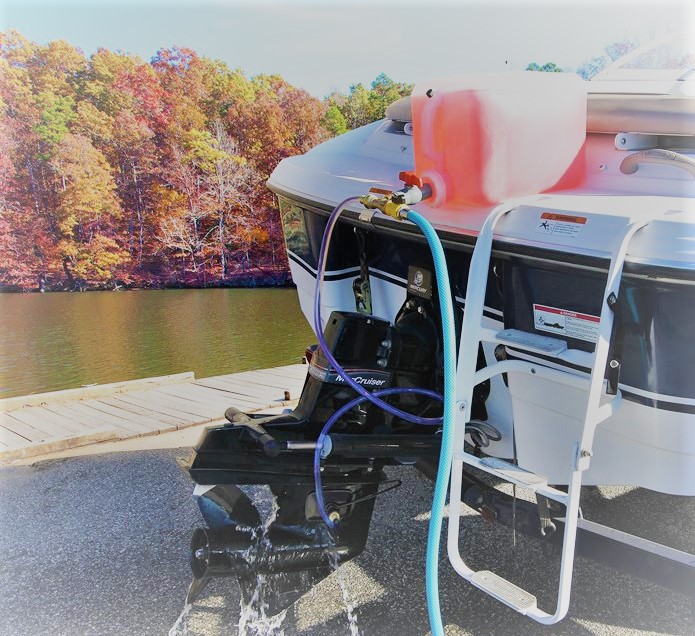
If you are unable to drain all of the water out from the engine, or just want to be certain there is nothing left that could possibly be sitting inside of a cooling passage, running antifreeze through the cooling system will ensure there is nothing that can freeze up and turn to ice.
Some engines have connection ports used for flushing the engine that can be attached to containers holding antifreeze to pump through the engine while it is running. If yours does not have a flush port, a set of muffs can be used on the outboard. Instead of running a garden hose, simply hook up a container holding antifreeze so it gets pumped through the system instead of water.
Tip: If you need information on muffs, or engine flushers, check out our guide on how to run your boat out of water on muffs.
The picture above shows an off-the-shelf solution to run antifreeze through your boats engine. This particular kit is produced by Camco and can be purchased off of Amazon for a reasonable price. It is built to allow the engine to run off of a hose until it gets up to temperature and has valves that can then be switched to stop the flow of water, and start the flow of antifreeze. The engine then pulls the antifreeze from the container where it will stay to keep the engine safe for the winter.
The antifreeze used to winterize a boat is different than the antifreeze used inside the engine of a car or truck. This is important to know because the antifreeze for marine and RV applications is specially formulated to be environmentally safe as well as safe to use in freshwater systems inside the boat. Depending on where you live, this can be found in your common big name brick and mortar stores as well as auto parts stores, marine stores, and of course, on Amazon.
Tip: We’ve included a link to purchase the RV & Marine Antifreeze online, however, it is much cheaper to purchase at your local brick an mortar store. We recommend checking that option out if possible and or convenient.
Fog the Engine
Fogging the engine may not be exactly what it sounds like. Fogging an engine is the process in which you spray fogging oil into the intake (via the carburetor or throttle body) while the boat is running, or directly into the cylinders through the spark plug holes. If your boat is older, the carburetor method works well, however, if your boat is newer and has a fuel injection system it may be tougher to get the fogging oil straight into the cylinder area, or may be unhealthy for the fuel injectors. In this case, spraying through the spark plug holes while the engine is not running may be the way to go for you.
Fogging an engine ensures the internals in the combustion chamber have a coating of oil on them. This will prevent surface rust from forming on the cylinder walls of the block which could damage the smooth surface and wear the piston rings prematurely. While your engine sits, condensation may form which can create this rust or corrosion on parts if not properly coated. Always make sure to refer to your boats manual if you are unsure if fogging your engine is safe, and how to do it on your specific model, especially on newer boats with components such as catalytic converters and EFI systems.
Drain the Engine Block and Manifolds
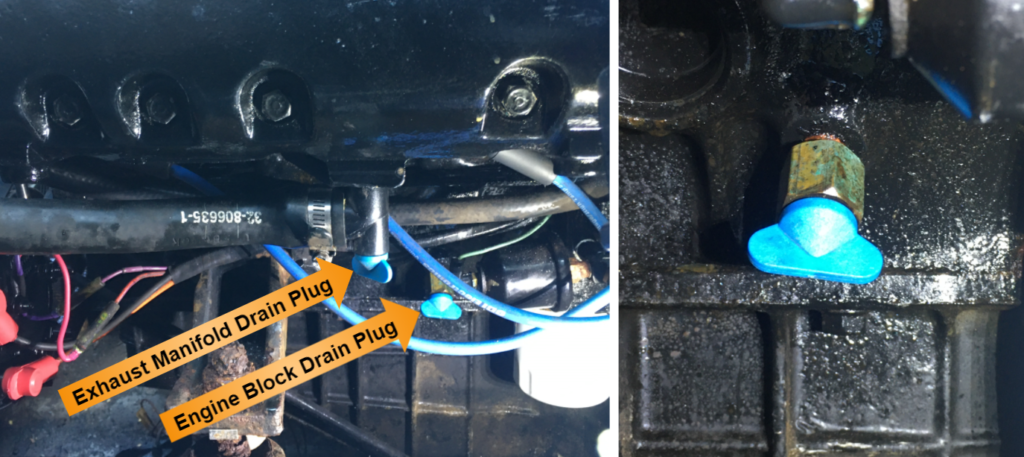
The best way to winterize your boats engine is to make sure there’s no water in the cooling system. Most engines will have drain plugs located on the block, as well as some in the manifolds and other hoses. These plugs can be removed to drain water from the cooling passages so it doesn’t stay full and risk freezing and ruining your engine. Be careful if relying on this as water could still be sitting in cooling pipes or hoses outside of the block. If you are unsure if all of the water has been fully removed, it may be a good idea to run antifreeze through it as well.
Tip: Always refer to your engines manual to ensure you have identified and removed all of the drain plugs. One missed plug could cause damage if not removed which is why we also recommend running antifreeze through an engine as well.
Basic Tips to Winterize Onboard Boat Systems
Run Antifreeze through the Fresh Water System
A boats fresh water system includes the holding tank for onboard water as well as sinks, showers, toilets, and other auxiliary systems this water may run through. Anywhere water runs on the interior of the boat will have to be drained and flushed with antifreeze to ensure nothing will freeze and crack in the cold weather.
Depending on what features are on your boat, this could look very different. Boats will have a different number of sinks, showers, and other amenities onboard. Make sure to plan accordingly and tend to each component as missing just one could mean not only fixing that part of the system, but possibly water damage as well when turned back on.
Drain the Hot Water Heater
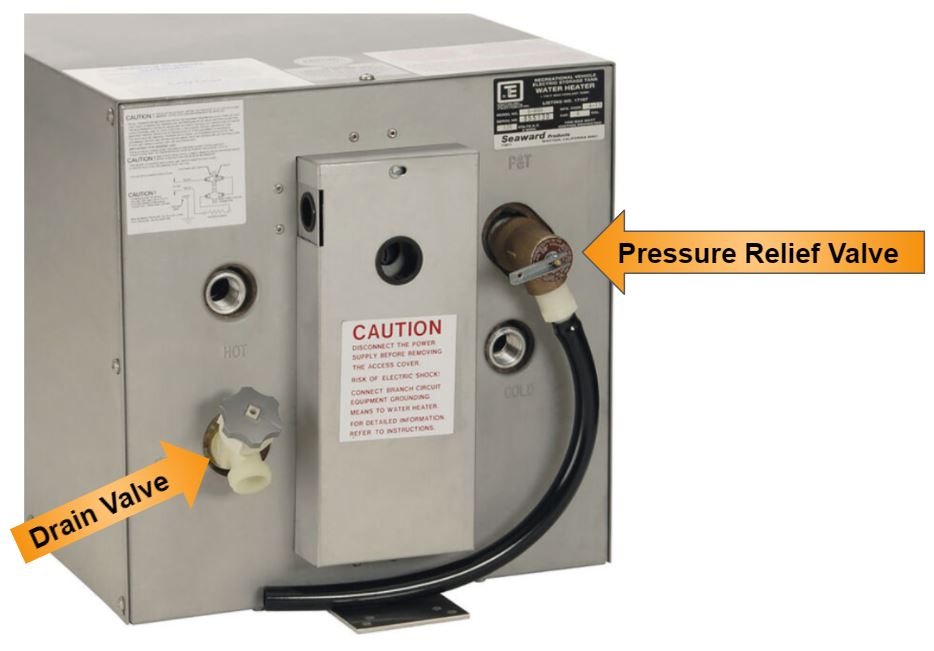
If your boat contains a hot water heater, you’re going to want to make sure you also protect it from the cold elements. There are two options to do this:
- Drain the hot water heater and bypass it to run antifreeze through the hot water lines
- Drain the hot water heater and fill it with antifreeze to run through the hot water lines
Each method works and is a matter of the owners preference. The main advantage of not filling the hot water heater up with antifreeze is the fact that less antifreeze will be used in the process which can save time and money. Some hot water heaters have bypass valves which make it simple to bypass, while others do not so the process is a little more complicated.
To drain the hot water heater simply open the drain vale with the water system turned off. Once the drain valve is open, open the pressure relief valve. This will create an opening and eliminate the vacuum that forms when only the drain valve is open resulting in a quicker draining process. If the unit is not being filled with antifreeze, the drain can be left open to let the unit air dry.
Tip: If the unit is not being filled with antifreeze, a small amount of antifreeze can be pumped into the unit before bypassing it to ensure if there is any water left inside it will not freeze.
Run Antifreeze Through the Head (Toilet)
To winterize a toilet in a boat, there are two parts to it that need to be considered. There is the water that is pumped into the toilet to flush the waste out, and there is the waste that exits the bowl into the holding tank. Before the winterizing process is started, the waste holding tank should always be pumped out.
The water coming into the head will typically be pumped in with an electric or manual pump. The source of the water should be located and antifreeze run through at that point. The inlet to the pump can be disconnected and either dropped into antifreeze, or use a temporary hose to connect to the pump that is run to the antifreeze. Some setups have a seacock at the inlet that can be closed, and the hose removed from there. Once the inlet is fed to antifreeze in some method, the toilet can be flushed until the antifreeze can be seen coming into the bowl.
Run Antifreeze Through the Shower
Similar to the toilet, a shower will have to have the fresh water, as well as the gray water side of the unit winterized. Once the fresh water holding tank in the boat has been filled with antifreeze, winterizing the freshwater side of a shower is as easy as running the hot and cold sides of the shower faucet, similar to the sink faucets.
Once this has been completed, antifreeze should be poured into the drain. It is important to refer to the boats user manual or confirm in a different manner how the gray water flows through your boats system and what components help it do so. Some shower drains run through a sump or some other pumps which need to have antifreeze run through them to ensure they do not freeze up and get damaged as well. This may be as simple as pouring the antifreeze down the drain until it runs through the pump and out the outlet, but it should always be confirmed the antifreeze has reached the final destination in the system.

